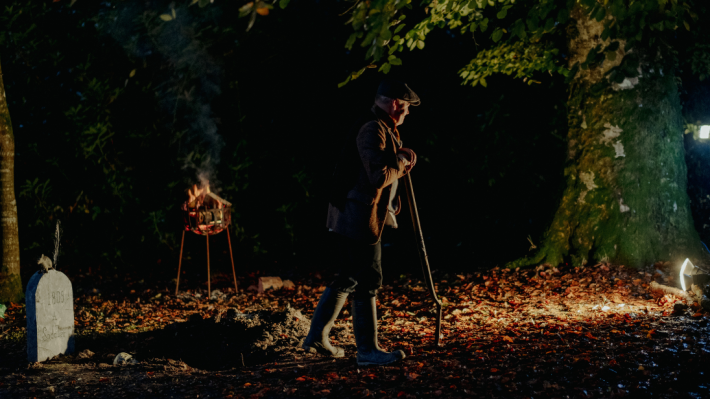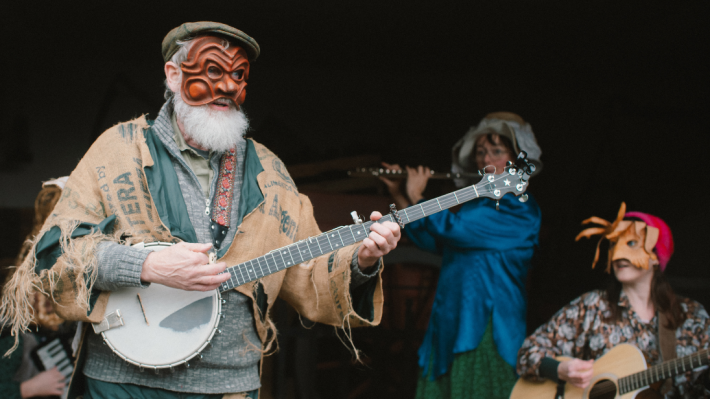
the folklore of halloween
The 31st of October was believed to be when the veil between this world and the supernatural world was at its thinnest. Learn more about the origins of Halloween and the Celtic festival of Samhain.
Halloween was believed to be when the veil between this world and the supernatural world was at its thinnest. Fairies and goblins could more easily roam the land, as could the souls of the dead. The Celtic people viewed “in-between places” as magical - doorways were neither in nor out of a house; the shoreline, neither water nor land; bogs, neither dry land nor water.
In early Christian times, they celebrated saints' feast days on the evening before their anniversaries. Over time, they merged these celebrations into All Saints' Day on November 1st to coincide with the old pagan festival, Halloween is the night before All Saints' Day. Then in the 11th century All Souls’ Day started to be added to the Christian calendar on 2nd November for those that were neither in Heaven nor Hell but spending time in Purgatory.
Jack O’Lantern
Many cultures have carved vegetables over time. The Irish and Scots carved turnips and placed lights in them to scare unsuspecting travellers at Halloween.
The name Jack O’Lantern came from folklore based on the phenomenon of ignis fatuus (Latin) meaning foolish fire. This ignis fatuus forms over bogs and marshes and tends to retreat if approached. There is no heat from it or smoke or smell. It is less often reported now than in the past due to drainage of marshes and bogs. There are theories as to how it forms but no definite answer. It is also known as will o’ the wisp.

In Ireland it has been associated with the story of Jack, a trickster who, after death, could find no place in Heaven. When he approached Hell the devil was fearful of his tricks and sent him away to wander the earth with a lump of coal to keep him company. Folklore held that this was the cause of the ignis fatuus, foolish fire, over the bogs. The story was printed in the Dublin Penny Journal in 1835 having been well known long before that.
Turnips or Pumpkins
The Puritans who emigrated to America and landed in New England never brought such ideas with them, instead celebrating Thanksgiving in late November. This originated as a Puritan festival in the 1600s with no pagan or Roman connotations. Carved pumpkins were used as a table decoration at a traditional Thanksgiving table.

When large numbers of Irish and Scottish emigrants arrived in America in the early 1800s they brought with them their Halloween traditions including the carving of the turnip as the Jack O’Lantern. They soon found that pumpkins, a fruit native to America, make perfect Jack O’Lanterns.
Trick or Treat
As well as divination and avoiding the fairy folk, it was a night of playing tricks. Neighbour’s belongings might be moved to strange places. Earliest reports of this mischief are in a newspaper from Pennsylvania in 1801 complaining of orchards and gardens being robbed. Over time it gets worse and in the cities, it becomes a night of mischief.
The American Halloween had taken on many of the past practices found in Britain and Ireland.
- In the British Isles beggars had asked for, and were given, soul cakes in return for a promise to say prayers for the dead souls of the family handing out the cakes.
- In some regions people had disguised themselves on the night so that the fairies would not take them away. In other regions, the disguises were to honour the fairies.
- There was a fear of the malice perpetrated by fairies and this gave people an excuse to generate mischief.
- Similarly in America people, especially the Irish and the Scots, celebrated Halloween by dressing up, and always in the background there was the threat of some mischief.
The trick-or-treat phenomenon started on the West Coast of America in the 1930s and gradually moved East almost as a subculture. However, World War Two led to sugar shortages and the evolving idea of trick or treat seems to slow down. After 1945 it became more mainstream, featuring in cartoons such as Charlie Brown and Snoopy, and in 1952, Walt Disney's 'Trick or Treat' film featuring Donald Duck.
Trick or treat can still be thought of as part of folklore where the traditional beliefs, customs, and stories of a community are passed through the generations by word of mouth.
Folklore is not a fossil from former times but rather an evolving story where parts of the meanings have been lost in the past.

